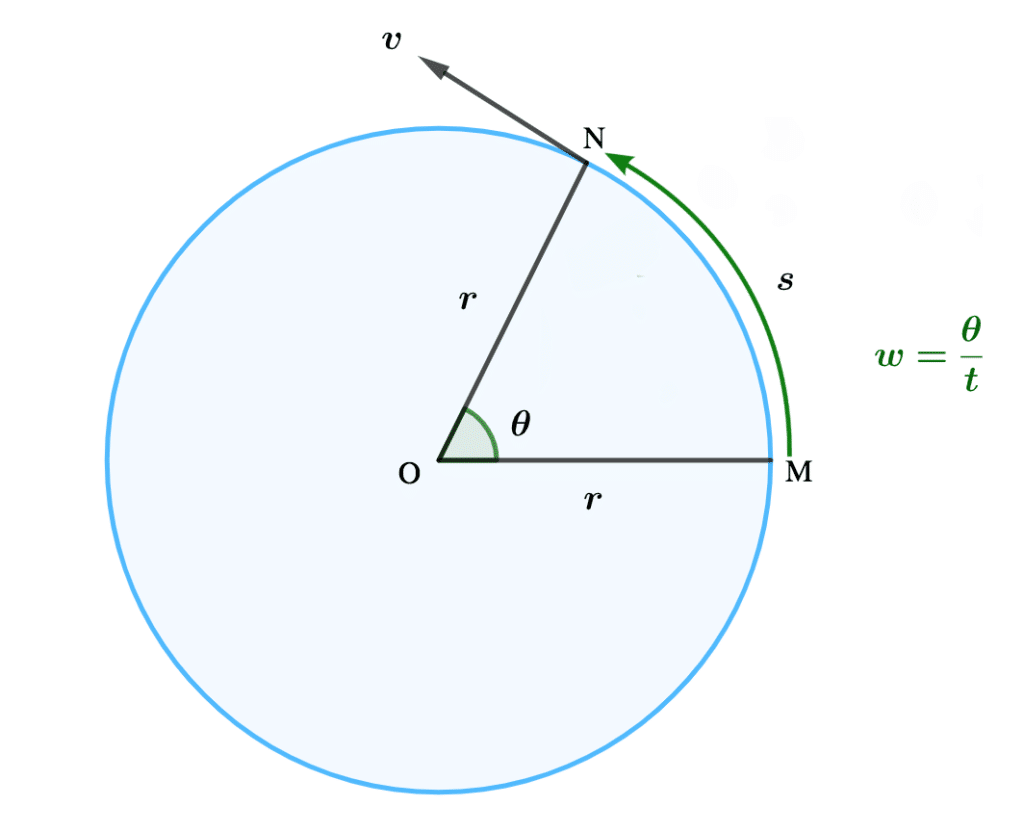Topic Content:
- Angular Speed and Velocity
When a stone is tied to the end of a string or rope and whirled around, the stone moves in a circular path as shown in the diagram below.

Suppose that as the stone is being whirled around, it moves from point M to N, in t seconds, so that the radius OM sweeps through an angle θ at the same time.
As the stone moves around the circular path and sweeps through angle θ, the stone moves with angular velocity, \(\scriptsize \omega \)
Angle \(\scriptsize \hat{MON} = \theta ,\) the angular velocity of motion, \( \scriptsize \omega \) can be defined as;
\(\scriptsize \omega = \normalsize \frac{\theta}{t}\) ……………..(1)
We can say that the angular velocity, \(\scriptsize \omega , \) is the angle turned through, with respect to time.
Recall that linear velocity, v is given by the formula:
\( \scriptsize v = \normalsize \frac{s}{t} \) …………….(2)
where s is the length of the arc MN.
Comparing equations 1 and 2, instead of using linear displacement in 1, we used angular displacement θ.

The image illustrates the relationship between the radius and the central angle θ in radians.
We define the rotation angle θ to be the ratio of the arc length to the radius of curvature:
You are viewing an excerpt of this Topic. Subscribe Now to get Full Access to ALL this Subject's Topics and Quizzes for this Term!
Click on the button "Subscribe Now" below for Full Access!
Subscribe Now
Note: If you have Already Subscribed and you are seeing this message, it means you are logged out. Please Log In using the Login Button Below to Carry on Studying!



thank you
this was very helpful
Nice work Bud